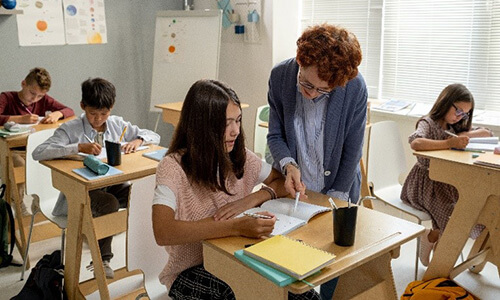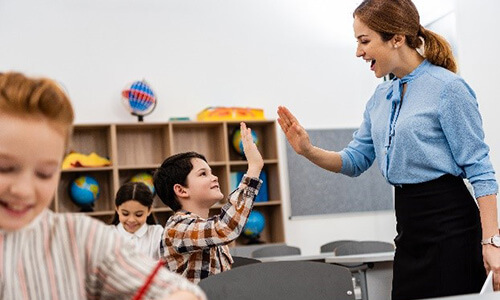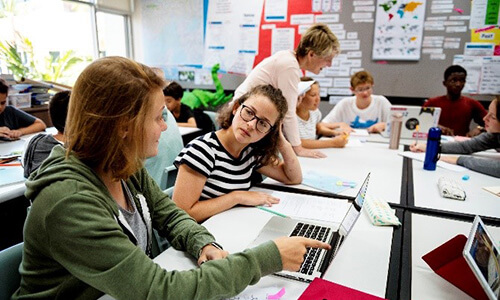Hello and greetings from QEDRAK!
This time’s blog is in the QED-SYNC segment, i.e. for Educators! Let’s begin by complimenting all of you for being YOU…. Passionate Educators with a desire to make a difference in the lives of the students you mentor; selflessly and endlessly, be it for a term or a year or (for the lucky few) spanning a few years with the same batch!
Maintaining student engagement, interest, focus, and excitement for learning can be quite challenging. You may have already read and heard our previous series titled MOTIVATING THE LEARNERS.

However, as you become ensconced in teaching, you may find that you need a refresher – with a range of different ideas and tricks to keep your students ‘excited about learning’.
A common scenario facing educators is that you notice the students in your class seem to be tiring out or losing interest, more so with the online scenario, (which we hope will soon phase into a blended model, if not completely Offline).
We get it! Every class cannot be 100% effective, or a ‘Eureka!’ moment or a ‘creative’ insight.
But there ARE a couple of ways that you can have your kids more focussed and ‘back on track’. They will help both the short-term and the long-term ‘excitement for learning’ mindset of students and help them to focus and concentrate in your class.
Here are some simple, doable and amazing short-term ‘Excitement Building’ ideas that you could try while teaching:
1. Define the Objectives Clearly

If you have a detailed lesson plan ready with goals, objectives and learning outcomes, a good idea would be to clearly state what you expect students to learn at the beginning of a session.
Students have a clearer direction and vision to keep going if they know where they are headed and what is expected of them.
2. Clearly define the study schedule
Students also like to know, in advance, how long a particular exercise or part of the class is likely to last. If your students know that you will be starting an activity after half the class is over, they are less likely to waste time wondering what the accessories on your table are for.
3. Change your Sessions style
If you always follow the same routine, and worse still use the traditional method of talking through a topic and then getting the class to answer a question sheet individually, they’ll get bored.

However, if, for example, you start with a game OR you can show your class a relevant short film and then get them to brainstorm their ideas in groups to put on a poster, they will use a multitude of personal, thinking and social skills and learning approaches. So, go ahead and experiment with different styles of teaching, different ways to introduce a topic, different ways of assessing their ongoing knowledge and retention, and discover what works best for that topic and that group.
4. Sneak in some WHITE bribes!
Social studies teachers are well aware of the British ruling style of the ‘carrot and stick’ approach. Well, at times as educators, it isn’t a sin to indulge in a wee bit of the same, which we call WHITE bribes!
Telling your students that they can play a learning game at the end of the lesson if they have done the necessary written work can help to keep them on task, and within the planned time schedule.
‘White bribes’ can be truly magical for subject areas which are difficult for the students to relate to. Answer their question: ‘Why do I need to learn this …. How is it going to help me?’
5. Get a pulse on their Understanding

In other words – assess your student’s learning, even mid-way through the lesson. Alerting them that there will be a quick quiz at the end of the session or the start of the next one, usually helps to ensure that students listen to you.
A quick quiz of ten basic questions will give you a quick insight into their level of engagement, alertness and understanding. Of course, the praise that you offer to the best scores will be encouraging for the others.
These were the simple Short-term excitement building techniques.
Although short-term energisers can help get you and your students through a teaching session, long-term ‘stay on track’ strategies have the potential to be a lot more powerful.
Here are some Long-term ‘Excitement Building’ tips:
Create a Good Atmosphere in your Sessions

The class mood and atmosphere can set the perfect learning environment. Students are most likely to do well if …
- They offer encouragement to one another;
- If they feel that they can make mistakes without being laughed at or ticked off. They are unlikely to take risks unless they are supported in doing so.
- If you praise those who try and don’t tolerate those who discourage others from trying.
Relate Current Outcomes to Life and a Future Assessment
The success of the journey of learning is dependent on how well students relate the new knowledge to everyday life AND, if you can relate the learning outcomes to the upcoming assessment. Telling your class roughly what grade or score they are likely to get by working at their current level is often highly motivating, especially if it is lower than they would wish.
Talking to the class as a whole means that everybody is involved and the energy of the group is likely to improve as a result. Needless to say, you may still wish to individually address some students who require a harder push or motivation or have a special need.
Feedback after assessment or in class observation
This is one aspect that is often missed in the best of schools and is a glaring gap in education these days – offering quality, individualised and timely feedback to each student.
As a student, if I am NOT aware of the finer detail or If I attempt the questions too slowly and don’t reach the last one or I don’t know where I erred and for what I lost out on the grades, then the learning pathway ahead will be static. It won’t move, I WON’T show any progress.
So, make sure you set aside enough time for feedback. Finding that they can improve their grades by trying some simple techniques can be a great vitamin pill to make them focus on the grey areas and shoot for higher achievement.

However, if you consistently tell your students that they need to work harder, even when they have performed well for you, they will become very disenchanted.
Similarly, excessive praise for an easy task may encourage them to believe that they can get away with anything. Be honest, positive yet realistic with your feedback.
Building Class Rapport
Looking back, as students ourselves, we have all wanted to do better & that little bit more for teachers that we ‘liked’, isn’t it?

The excitement to welcome them with enthusiasm, taking extra care to be attentive and to do his/her HW more neatly. I am sure many of us have been there and done it. Analyse what was different in the TL practices of those memorable gurus. Rapport building! Connecting!
Building a rapport with students beyond academic demands, is a very important long term ‘excitement’ strategy. And this is not applicable to class teachers alone; but also, to the transient subject teachers that the time table forces in and out of classes for brief periods during the day.
To keep the excitement alive – be different.
On some days, engage them in discussion or an activity that helps you to bond with them, and avoid judging their effort or the outcome. It may also be worth asking particular students to stay behind for a ‘small chat’ with you: they may be happy to express themselves with you individually and in private, on matters that they would never raise before others.
Peer Talk
Sharing good as well as unsuccessful classroom practices with peer teachers is a great way to be on the same page and plan as a team. If there is a particular student whose performance is worrisome, it might be worth finding out if that is only your perception, or if the team also shares the same worry.
If a specific teacher is in charge of their pastoral care, they should know about your concerns and might be aware of an explanation for them, such as a family or health issue. This would help you to then change the learning style and approach for that student.
Parents as Partners
Schools that connect regularly and in faith with Parents, seem to achieve greater success in student achievements.

Most schools have some parent – teacher meetings during the school year. This is an ideal time to either ask parents to support you in motivating a student to work harder, and/ or to gain insight into any aspect of the child’s life outside school that may be hindering their performance. For some, the frequency and nature of the meetings would vary depending on individual need. With parental support, the excitement for learning can be holistically kept alive more meaningfully and for a longer time.
Building excitement for differentiated learners
Our classroom is a mixed bag of the ‘super capable’, ‘less able’ and ‘average’ students. The ‘less able’ students struggle to stay motivated if no amount of work brings them a top grade. Similarly, ‘super capable’ students may feel cheated if an average student is celebrated for achieving the kind of good grade that they manage effortlessly all the time.
Here’s a tip – it may help if you can plan for some goal setting and give students their individual ‘target grade’, so that they feel assessed in terms of their own ability. Setting target grades requires good knowledge of your students and may be done best in consultation with colleagues, but it is worth it if your students feel that they are aiming at something realistic and achievable.
Students in the ‘driver’s seat’
Hmmm, letting go of the control of ‘teaching’ in your class can make some teachers feel really shaky. But, the whole focus of modern day education (including the goals of NEP 2020), is towards putting students ‘ in-charge’, making them ‘responsible’ and ‘accountable’. When they engage completely, mind-body-spirit, in the learning process they are excited.

So PUT THEM in the driver’s seat and see how the journey of learning unfolds before you – through self-learning, peer learning, research, discussion and so much more. Your role becomes that of the navigator; keeping watch as an alert and mindful mentor; at times becoming a participant to revive the excitement.
No, not by giving them the ready-made answers, but suggesting different points of view and by asking further questions to solutions they come up with, to push for HOT and HOL (levels 4-5-6 in the Bloom Pyramid).
“Teaching for life-long learning, is more about asking the right questions than giving the right answers.”
So, Educators, these were just a couple of the short term and long-term ideas for building ‘excitement for learning’ in your classroom. In finality, remember . . . your ultimate goal is not just to give your students some knowledge, but to aid their development as individuals with their unique abilities, interests, pace & styles, each developing future readiness in all aspects.
Good Teachers introduce new thoughts,
Great Teachers introduce new ways of thinking.Good Teachers care about the subjects,
Great Teachers care about each student.Good Teachers teach us what they know,
Great teachers teach us how to learn.– Adam Grant
Be a GREAT teacher and kick in the Excitement for Learning in your classroom!


